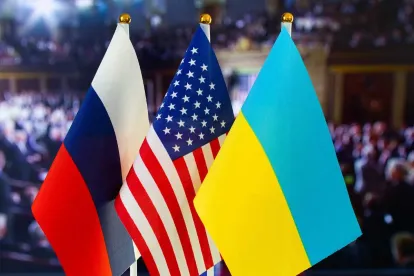On the one-year anniversary of the invasion of Ukraine, the Biden administration has announced a series of additional sanction measures targeting Russia. These new sanctions are designed to further isolate Russia from goods and services that aid its war effort and to punish sanctions evaders. These new measures will affect manufacturers of goods that are used in targeted industry sectors, including their business with certain customers outside of Russia.
Specifically, the White House has announced the following categories of new sanctions measures:
-
The U.S. Treasury and State Departments will impose sanctions against over 200 new companies and individuals in Russia and elsewhere. The list will include 12 Russian financial institutions and actors connected to Russia’s defense and technology sectors.
-
The U.S. Commerce Department will add nearly 90 Russian and third-country companies to its Entity List as sanctions evaders. This measure will prevent them from getting access to some or all U.S. exports.
-
The U.S. Commerce Department also will impose new export controls on industrial machinery, luxury goods, and drone components. These measures include:
-
Over 300 additional industrial items will now require a license for export to Russia or Belarus;
-
Over 250 types of additional luxury goods will now require a license for export to Russia or Belarus or to sanctioned individuals;
-
Expanded restrictions will be imposed on the oil, gas, and chemical sectors to better align with restrictions set by U.S. allies; and,
-
Expanded restrictions will be imposed on drone components to prevent them from reaching Iran. (To date, U.S.-manufactured parts have been found in Iranian drones used by Russia in conducting the war in Ukraine).
-
The U.S. will expand its authority to sanction Russia’s metals and mining sectors. This authority will permit OFAC to add companies and individuals operating in these industries to sanctions lists.
-
The U.S. will increase tariffs on Russian metals, minerals, and chemical products.
-
The U.S. and its G7 allies will create a coordinated enforcement mechanism to address sanctions evasion. The U.S. will chair this mechanism in the first year.
Other G7 nations are expected to announce parallel measures.
Some of these measures have already been implemented. The Commerce Department has already promulgated rules implementing the additions to the entity list and the new export controls regarding drone components, luxury goods, and industrial items. Additionally, OFAC has implemented the additions to its sanctions lists.
Other measures have not yet been fully implemented. For example, it remains to be seen how OFAC will exercise its new authority to sanction the Russian mining and metals sectors. Additionally, the scope and operations of the G7 coordinated enforcement mechanism will develop over time as it is created and implemented.
When considering these additional sanctions, it is essential to recognize that more transactions and business relationships which were once routine (or considered beyond the reach of 2022’s sanctions) must now be thoughtfully assessed. The risk is not only limited to manufacturers of the types of goods that are the focus of the industry- and product-specific sanctions. Given the number of new companies and individuals designated as blocked by these new measures, all manufacturers face the need to sufficiently scrutinize their business relationships.
As the war in Ukraine rages on, it is likely that the sanctions landscape will continue to evolve. In particular, sanctions measures are likely to increasingly reach certain third-country activity as the U.S. and its allies continue to focus on sanctions evaders and activity in third countries that aids Russia’s conduct of the war. As a result, manufacturers (particularly those in heavily affected industries such as defense, industrial, energy, and high technology sectors) may wish to actively monitor developments in order to timely assess the impact of new measures on their operations.
With the assistance of experienced legal counsel, diligence policies can be implemented that are comprehensive, yet right-sized to a company’s risk profile, to assess and manage sanctions risk. A first step in such a review is refreshing screening protocols for customers, suppliers, vendors, and other business partners to ensure that no sanctioned parties are present. Continued refreshing of this screening is likely to be needed as the list of sanctioned parties expands. Additionally, manufacturers can assess the impact of the new export controls on luxury goods and industrial products by reviewing the specific lists of products issued by the Commerce Department to evaluate the impact on their particular product lines. Furthermore, as sanctions evolve, know-your-customer diligence takes on added importance. Asking about the end use, end user, and ultimate destination of exported products, and being attentive to any red flags presented, may help identify potentially problematic transactions before they are consummated and constitute a violation.





 />i
/>i

